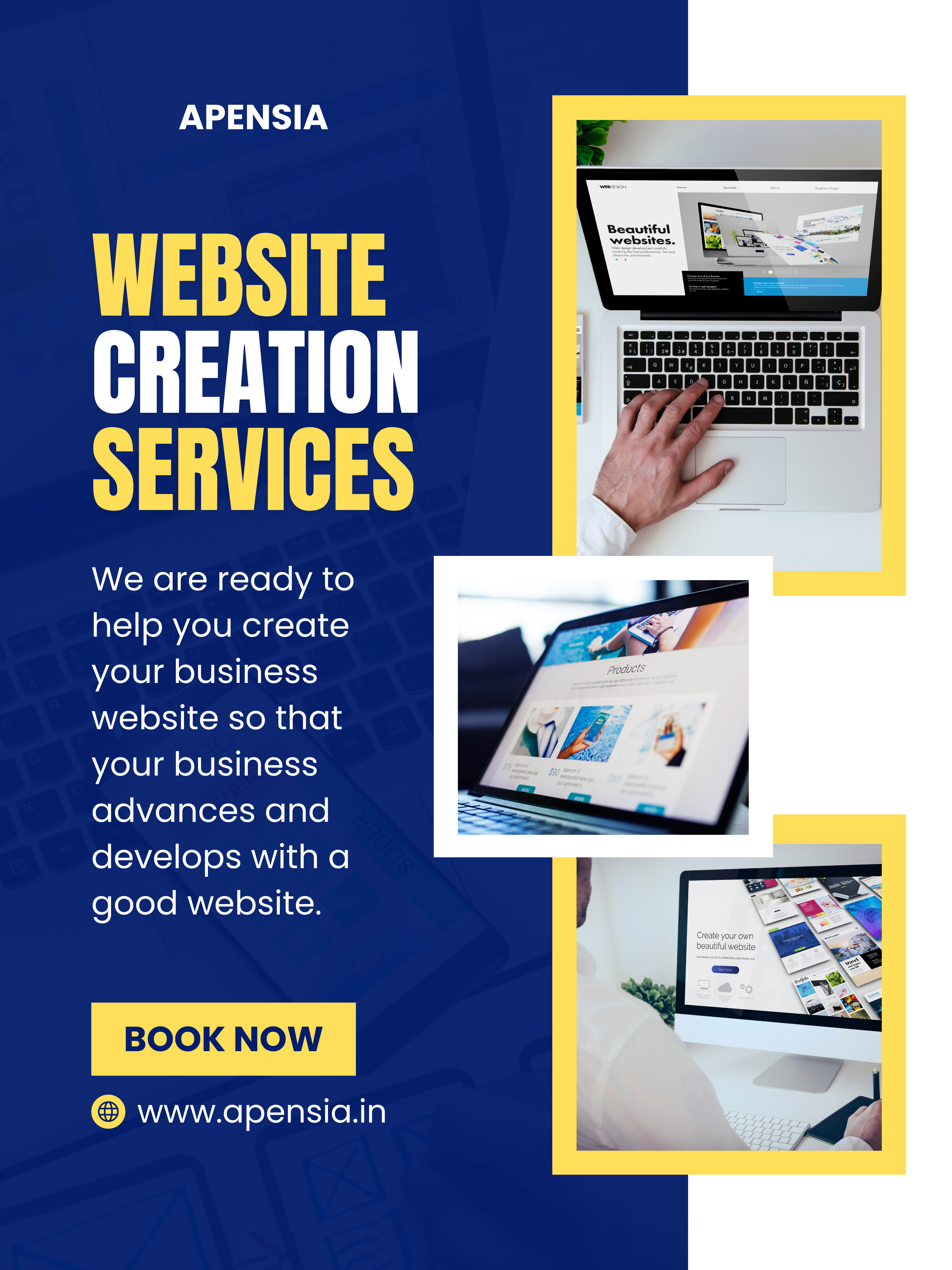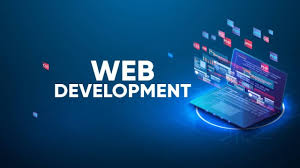Data Storage, artificial intelligience, data protection, Flash Storage, AI Security

How AI Is Making Storage and Data Management More Intelligent
“Less is more” was the motto of Ludwig Mies van der Rohe, one of the pioneers of modern architecture. That same principle should underlie IT security strategies.
Setting the Right Expectations. Many organizations make the mistake of believing that automation is the answer to all their problems. Today’s automated tools are at their best when applied to fairly simple, repetitive tasks. Organizations that expect automation tools to handle overly complex tasks or resolve all the issues related to a process are less likely to be successful.
Generative AI burst on the scene less than two years ago with the introduction of ChatGPT in November 2022. It has taken the business world by storm, becoming embedded in a wide range of applications and integrated into many common workflows. According to a McKinsey & Company report, gen AI is expected to reduce the total amount of work needing human intervention by up to 70 percent. The consulting firm also predicts it will generate trillions of dollars in value across business sectors.
Frequently Asked Questions on Digital Marketing
What services does your digital marketing company in Chandigarh offer?
We provide comprehensive digital marketing services, including Search Engine Optimization (SEO), Pay-Per-Click (PPC) advertising, Social Media Management, Content Marketing, and more, tailored to enhance your online presence.
Why should I choose your digital marketing agency in Chandigarh?
Our agency combines local market expertise with a proven track record of successful campaigns. We focus on delivering measurable results and personalized strategies to meet your business goals.
How can digital marketing benefit my business in Chandigarh?
Digital marketing can significantly boost your business by increasing brand visibility, attracting targeted traffic, and enhancing customer engagement, leading to higher conversions and growth.
How do I choose the right digital marketing agency in Chandigarh?
Consider factors such as the agency's experience in your industry, success stories, range of services, and alignment with your business objectives. Client testimonials and case studies can also provide valuable insights.
What is the cost of digital marketing services in Chandigarh?
The cost varies based on the scope of services and specific business needs. We offer customized packages designed to provide optimal ROI for our clients.
Frequently Asked Questions on Web Development
What services does your web development company in Chandigarh offer?
We provide comprehensive web development services, including custom website design, e-commerce solutions, content management systems, and responsive web applications, all tailored to meet your business needs.
How much does website development cost in Chandigarh?
The cost varies based on the complexity and features required. We offer competitive pricing and provide detailed quotes after understanding your specific requirements.
How long does it take to develop a website?
The development timeline depends on the project's scope and complexity. Typically, a standard website takes 4-6 weeks from initial consultation to launch.
Do you offer post-launch support and maintenance?
Yes, we provide ongoing support and maintenance services to ensure your website remains up-to-date, secure, and performs optimally.
Can you redesign my existing website?
Absolutely. We specialize in redesigning websites to enhance aesthetics, functionality, and user experience, aligning with current web standards and your business goals.
Frequently Asked Questions on SEO
What services does your SEO company in Chandigarh offer?
We provide comprehensive SEO services, including on-page optimization, off-page strategies, technical SEO, local SEO, and content marketing, all designed to enhance your online visibility and drive organic traffic.
How much do SEO services cost in Chandigarh?
The cost varies based on the project's scope and specific business needs. Our packages typically range from ₹8,500 to ₹25,000 per month, depending on the services required. :contentReference[oaicite:0]{index=0}
How long does it take to see results from SEO?
SEO is a long-term strategy. Typically, noticeable improvements can be seen within 3 to 6 months, depending on the competitiveness of your industry and the effectiveness of the implemented strategies.
Do you offer local SEO services for businesses in Chandigarh?
Yes, we specialize in local SEO to help Chandigarh-based businesses improve their visibility among local audiences, enhancing foot traffic and local online presence. :contentReference[oaicite:1]{index=1}
Can you help with technical SEO issues on my website?
Absolutely. We conduct thorough technical SEO audits to identify and fix issues such as page speed optimization, mobile responsiveness, and schema markup implementation to ensure your website meets search engine ranking criteria. :contentReference[oaicite:2]{index=2}
Frequently Asked Questions on Software Development
What services does your software development company in Chandigarh offer?
We offer a comprehensive range of services, including custom software development, mobile app development, web development, UI/UX design, and quality assurance testing, all tailored to meet your business needs.
How much do software development services cost in Chandigarh?
The cost varies based on the project's complexity and specific requirements. We provide detailed quotes after understanding your needs to ensure transparency and value for your investment.
How long does it take to develop custom software?
The development timeline depends on the project's scope and complexity. Typically, a standard project can take anywhere from a few weeks to several months.
Do you offer post-launch support and maintenance?
Yes, we provide ongoing support and maintenance services to ensure your software remains up-to-date, secure, and performs optimally.
Can you integrate new software with our existing systems?
Absolutely. We specialize in integrating new software solutions with your existing systems to ensure seamless operations and data flow.
Frequently Asked Questions on Web Designing
What services does your web designing company in Chandigarh offer?
We offer a range of services including custom website design, responsive design, e-commerce solutions, and website maintenance to help businesses establish a strong online presence.
How much does a website design cost in Chandigarh?
The cost varies depending on the complexity and features required. We provide customized quotes after understanding your specific needs to ensure the best value.
How long does it take to design a website?
The timeline depends on the project's scope. Typically, a standard website design takes 2-4 weeks from initial consultation to launch.
Do you offer website redesign services?
Yes, we specialize in redesigning existing websites to improve aesthetics, functionality, and user experience, aligning with current web standards and your business goals.
Will my website be mobile-friendly?
Absolutely. We prioritize responsive design to ensure your website performs optimally across all devices, including smartphones and tablets.
Frequently Asked Questions on PR and Image Branding
What services does your PR and image branding company in Chandigarh offer?
We offer comprehensive services including public relations strategy, media relations, crisis management, brand identity development, and influencer marketing to enhance your brand's visibility and reputation.
How can PR services benefit my business?
Effective PR strategies build credibility, manage public perception, and foster trust with your target audience, leading to increased brand recognition and business growth.
What is the difference between PR and advertising?
While advertising involves paid promotions, PR focuses on earned media through strategic communication and relationship-building to enhance brand reputation.
How do you handle crisis management?
We develop proactive crisis communication plans, engage with media outlets, and provide timely responses to mitigate negative impacts on your brand's reputation.
Can you help with influencer marketing in Chandigarh?
Yes, we collaborate with local influencers to create authentic campaigns that resonate with your target audience, enhancing brand visibility and engagement.
Frequently Asked Questions on SMO and SMM
What services does your SMO and SMM company in Chandigarh offer?
We offer comprehensive services including social media strategy development, content creation, community management, paid social advertising, and analytics reporting to enhance your brand's presence on platforms like Facebook, Instagram, Twitter, and LinkedIn.
How can Social Media Optimization (SMO) benefit my business?
SMO enhances your brand's visibility on social platforms, drives targeted traffic to your website, improves search engine rankings, and fosters direct engagement with your audience, leading to increased brand awareness and customer loyalty.
What is the difference between SMO and SMM?
SMO focuses on optimizing your social media profiles and content to increase organic reach and engagement, while SMM involves using paid advertising campaigns on social platforms to promote your brand and achieve specific marketing objectives.
How do you measure the success of social media campaigns?
We utilize key performance indicators (KPIs) such as engagement rates, follower growth, website traffic from social channels, conversion rates, and return on investment (ROI) to assess and optimize the effectiveness of our social media campaigns.
Can you manage social media accounts for small businesses in Chandigarh?
Absolutely. We tailor our SMO and SMM services to meet the unique needs of small businesses, helping them build a strong online presence, engage with their local audience, and drive business growth through effective social media strategies.

Web development, also known as website development, refers to the tasks associated with creating, building, and maintaining websites and web applications that run online on a browser. It may, however, also include web design, web programming, and database management.
Web development is closely related to the job of designing the features and functionality of apps (web design). The term development is usually reserved for the actual construction of these things (that is to say, the programming of sites).
The basic tools involved in web development are programming languages called HTML (Hypertext Markup Language), CSS (Cascading Style Sheets), and JavaScript. There are, however, a number of other programs used to “manage” or facilitate the construction of sites that would otherwise have to be done “from scratch” by writing code. A number of content management systems (CMS) fall into this category, including WordPress, Joomla!, Drupal, TYPO3, and Adobe Experience Manager, among others.
.What Exactly is Web Development?
Web development is closely related to the job of designing the features and functionality of websites and apps (often called “web design”), but the “web development” term is usually reserved for the actual construction and programming of websites and apps.
Think of all the web pages you have used over the years – Web Developers built those sites, making sure they functioned properly and performed in ways that allowed for a great user experience. Web Developers do this by writing lines of code, using a variety of programming languages, which vary depending on the tasks they are performing and the platforms they are working on.

What Are the Most Common Programming Languages?
The most common programming languages involved in web development are:HTML (Hypertext Markup Language) CSS (Cascading Style Sheets)
JavaScript
Types of Web Development
There are three main types of web development: front-end development, back-end development, and full-stack development.
Turn your ideas into a website you love with apensia -Building a website for your business →
What Is Front-End Development?
Front-end development involves the “client-facing” side of web development. That is to say usually, front-end web development refers to the portion of the site, app, or digital product that users will see and interact with. A Front-End Developer, therefore, is responsible for the way a digital product looks and “feels,” which is why they are often also referred to as Web Designers.
Front-End Web Developers focus on translating website design and visual ideas into code. A front-end Software Developer takes the design ideas created by others on web development teams and programs them into reality, acting as a bridge between design and technology.
Front-End Developers will usually need to possess a solid understanding of programming languages, including HTML, CSS, and JavaScript, as well as frameworks like React, Bootstrap, Backbone, AngularJS, and EmberJS. Responsibilities of a Front-End Developer would include creating responsive websites (that look and function well on any device), conducting website testing and fixing any bugs detected along the web development process, and ensuring site structure follows SEO best practices.
Turn your ideas into a website you love with apensia -Building a website for your business →
What Is Back-End Development?
If Front-End Developers are responsible for how a digital product looks, Back-End Developers are focused on how it works. A Back-End Developer creates the basic framework of a website before maintaining it and ensuring it performs the way it should, including database interactions, user authentication, server, network and hosting configuration, and business logic. Working behind the scenes – or server-side – Back End Developers are concerned with the systems and structures that allow computer applications to perform as desired.
The primary responsibility of Back-End Developers is to ensure the functionality of the site, including its responsiveness and speed. To do that, Back-End Developers have to know how to build servers with modern frameworks (while developing custom APIs and serving static websites and files), and how to manage databases and data on a web server.
Typically, Back-End Developers use server-side programming languages, including PHP, Ruby, and Python, as well as tools including MySQL, Oracle, and Git.
Turn your ideas into a website you love with apensia -Building a website for your business →
What Is a Full-Stack Developer?
A Full-Stack Developer is someone familiar with both front- and back-end development. Full Stack Developers usually understand a wide variety of programming languages and because of their versatility, they might be given more of a leadership role on projects than developers who specialize. They are generalists, adept at wearing both hats, and familiar with every layer of development. Obviously, employers want to hire Full-Stack Developers – according to an Indeed study, they are the fourth-most in-demand job in tech.
If the title is contentious, it’s in the generalist nature of the position. Developers who specialize in the front-end or back-end often bristle at the notion that someone could be equally adept at both – the expression “jack-of-all-trades, master of none” comes to mind.
“My defensive tendencies are normally put on high alert when I hear that magic phrase (‘full-stack’),” wrote Front-End Developer Andy Shora. “Stacks are a lot bigger than what they used to be, and being able to claim one has acquired refined skills at every layer of web development is certainly not a small claim. Does this mean you have a broad range of skills or you specialize in everything?”
While that perception persists, there still is an increasing number of tech professionals who consider themselves Full-Stack Developers. According to a recent Stack Overflow survey of Developers, 48.2 percent consider themselves Full-Stack Developers.
What’s unclear is whether Developers are now expected to possess a broader skillset, or if Developers are taking it upon themselves to understand functions at both the front-end and back-end. Either way, it’s becoming increasingly important for aspiring Developers to have a foundation in both.
“For most people hoping to break into web improvement, you should center around working up an establishment in both front-end and back-end advancement first,” recommended Software Engineer and Tech Writer Muhammad Anser. “At that point, you can float towards a claim to fame later on.”
And with demand for Developers expected to grow 15 percent by 2026 (for 24,400 new jobs), much faster than the U.S. average rate of job growth, there may not be a better time to dive in and learn more about all the layers of Web Development.
Turn your ideas into a website you love with apensia -Building a website for your business →
Frontend Frameworks/Libraries
React.js : A popular JavaScript library for building dynamic, component-based user interfaces.Angular : A full-fledged framework for building single-page applications (SPAs), with features like two-way data binding and dependency injection.
Vue.js : A progressive JavaScript framework that is flexible and can be used for building both simple and complex user interfaces.
Backend Development
The Backbone of the Web. Backend is the server side of a website. It is part of the website that users cannot see and interact with. It is the portion of software that does not come in direct contact with the users. It is used to store and arrange data.

CSS Frameworks
CSS frameworks are a collection of pre-written CSS files (and sometimes JavaScript components) that offer reusable code for common tasks such as buttons, grids, forms, and navigation menus.
These CSS frameworks provide a set of standardized, reusable components and a predefined structure, allowing developers to create responsive and aesthetically pleasing websites with reduced effort.
CSS Versions
CSS 1: The foundation, released in 1996, introduced basic styling capabilities for fonts, colors, and margins.CSS 2: Expanded in 1998, adding positioning elements, pseudo-classes, and improved layout options.
CSS 2.1: Further refinements in 2004, including improvements to inheritance and box model properties.
CSS 3: Introduced from 2001 onwards, CSS3 isn't a single version but a collection of modules adding
features like animations, media queries, and web fonts. It's constantly evolving.
CSS Preprocessors
This section contains information about the preprocessors used in CSS.CSS Preprocessor SASS CSS Preprocessor LESS
CSS Preprocessors LESS vs SASS
Why learn CSS?
1. Enhance Visual Appeal: CSS allows you to style your web pages, making them visually appealing and engaging. Here’s why it matters:User Experience (UX): Well-designed websites attract and retain users. CSS enables you to create beautiful layouts, choose fonts, and apply colors that resonate with your audience.
2. Responsive Design: In today’s mobile-first world, responsive design is crucial. CSS empowers you to:
Media Queries: Adapt your layout based on screen size (desktop, tablet, mobile).
Flexbox and Grid: Create flexible, adaptive designs that look great on any device.
3. SEO Benefits: CSS indirectly impacts your site’s SEO. Here’s how:
Page Load Speed: Well-organized CSS files load faster, improving user experience. Google considers page speed as a ranking factor.
Structured Content: Properly styled HTML (thanks to CSS) enhances readability for search engines and users.
Mobile Friendliness: Responsive CSS ensures your site performs well on mobile devices, positively affecting rankings.
4. Efficient Maintenance: CSS promotes clean code and separation of concerns:
Modularity: Separate CSS files allow easy updates without affecting other parts of your site. Consistency: Apply styles consistently across your site using classes and IDs.
5. Career Opportunities: Learning CSS opens doors to various roles:
Front-End Developer: Mastering CSS is essential for front-end development.
Web Designer: CSS skills are fundamental for creating stunning web layouts. Full-Stack Developer: Understanding CSS complements back-end skills.
Turn your ideas into a website you love with apensia -Building a website for your business →exploring web trends

How Software-Defined Cloud Interconnects Simplify and Enable Multi-Cloud
The multi-cloud model offers several benefits, including greater flexibility, less vendor lock-in and competitive pricing. Organizations can choose the cloud services that most precisely fit their needs and budget. However, multi-cloud also presents challenges, particularly when it comes to connectivity. Most users connect to the cloud using the public Internet. However, organizations increasingly need more secure connections to protect sensitive applications and data. Performance and reliability can also be a concern with latency-sensitive and mission-critical workloads. Private connections address these problems but increase network complexity as organizations add more public cloud services.

Data Diodes: From Spy Networks to Mainstream Cybersecurity
The NSA guidance does not mention data diodes specifically. However, they are useful tools for implementing network segmentation while ensuring that authorized users can access data. Traditionally, organizations segment their networks using firewalls, virtual LANs (VLANs) and access control lists. They can then define security policies that limit communication between applications and workloads. However, these technologies can be time-consuming to implement and manage and are prone to human error. IT teams may be slow to make configuration changes to address emerging threats.

Technologent Wins Best Technology Leadership Team at High Tech Awards 2024
apensia is thrilled to announce that it has been awarded the "Best Technology Leadership Team" at the prestigious High Tech Awards 2024, powered by Octane. This recognition highlights the company's commitment to driving innovation and excellence within the technology sector. Held at AV Irvine in Irvine, CA, the event brought together the top innovators, entrepreneurs, and leaders from Orange County’s technology community. The annual High Tech Awards (HTA) honor businesses that are at the forefront of technological advancements and innovation in the region.
